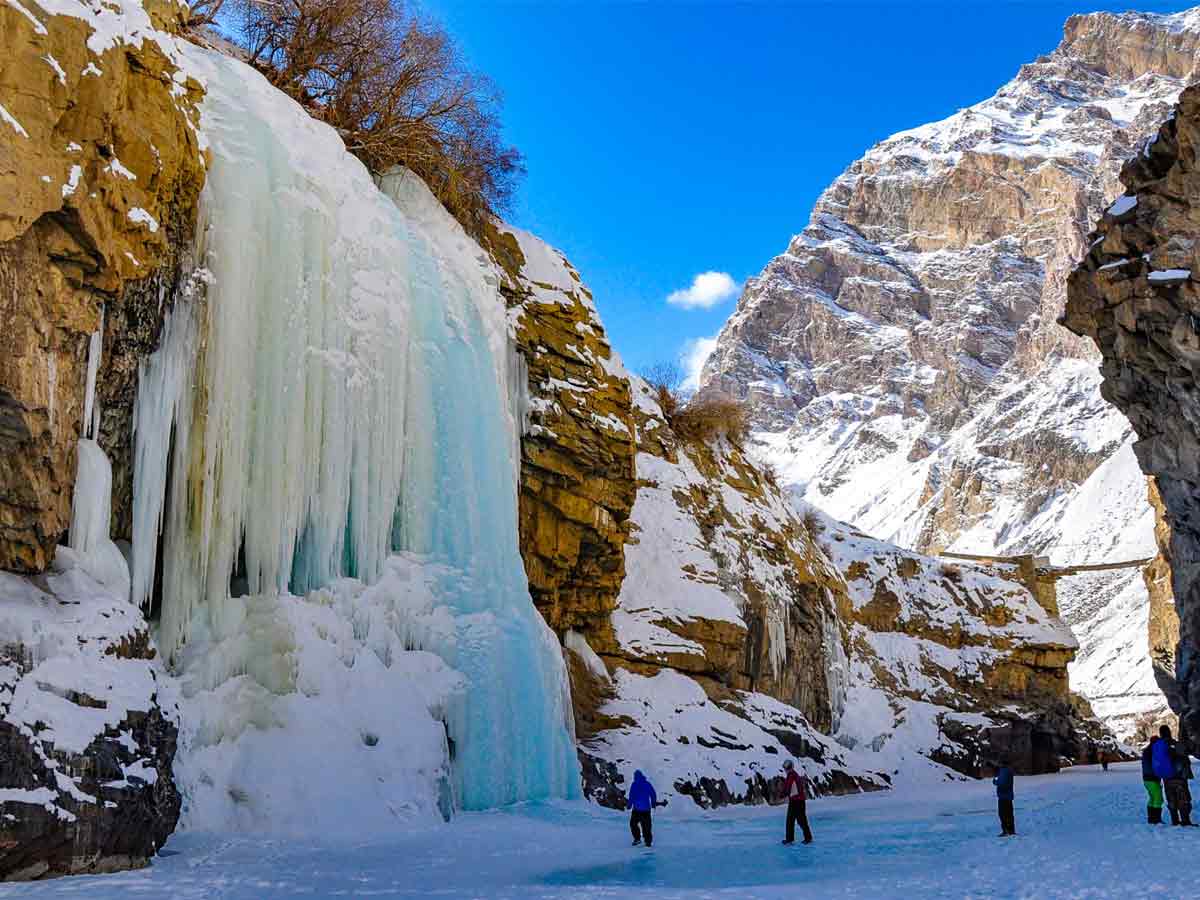The Chadar trek or Frozen River Trek is a spectacular adventure. It’s simple to understand why. Photographs of Buddhist monks walking barefoot on a freezing river have appeared in travel magazines worldwide. The Chadar trek has been documented on both the Discovery and National Geographic channels. Anyone who returns from the Chadar trek contributes to the atmosphere by chatting reverently about the conditions.
It’s a six-day walk across harsh terrain. In Ladakh, it’s a journey across a frozen river. During the day, the average mean temperature is minus ten degrees. Temperatures drop to minus 20 to minus 25 degrees at night. Every several hours, ice builds, breaks, and changes color on the river.
The Chadar (or ice) does not form over the river in several areas. Trekkers must then build a new track, ascending over snow-covered barriers and down to a more stable ice location on the river. The truth is that harsh conditions aren’t difficult to overcome. But it’s the one-of-a-kind experience that sets it different. The scenery, temperature, atmosphere, frozen river, sleds, strange campsites, caves, and the ever-changing Chadar are unique. It’s so one-of-a-kind that you have to see it to believe it. The Chadar trek is by far the most unique trip.
The Journey Starts…
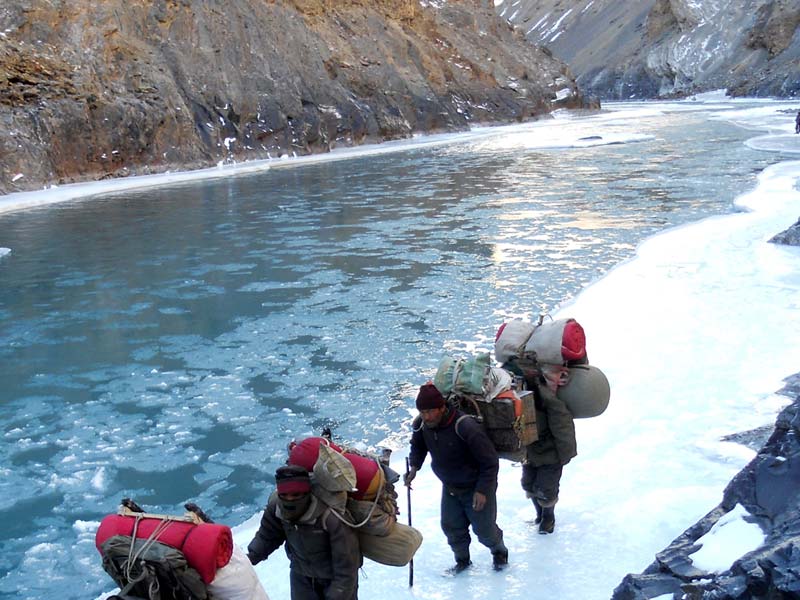
The journey begins in Leh, a little highland town. The only way to get to Leh is by plane, and it is completely engulfed in snow, giving it a completely white appearance. As the plane descends, approaching Leh, located at 11400 feet above sea level, passengers can see the snow-capped mountains. The walk takes you across the icy Zanskar River in the winter. The best time to traverse the ice is during February. The ice is usually at its most stable during this period.
The Chadar Trek starts at Chilling, a little settlement where the Zanskar River begins to freeze. The safest paths over the dangerous ice sheets must be identified. The ice conditions beneath the feet must always be considered. Trekkers can choose to camp like the natives in caves along the banks or pitch tents where the ice is the most stable. The temperature is close to 20 degrees below freezing, and it drops even further after sundown. Warm, layered clothing is advised, as is being active as much as possible. These are always helpful in keeping the body warm, preventing cold sores, and preventing the blood from freezing.
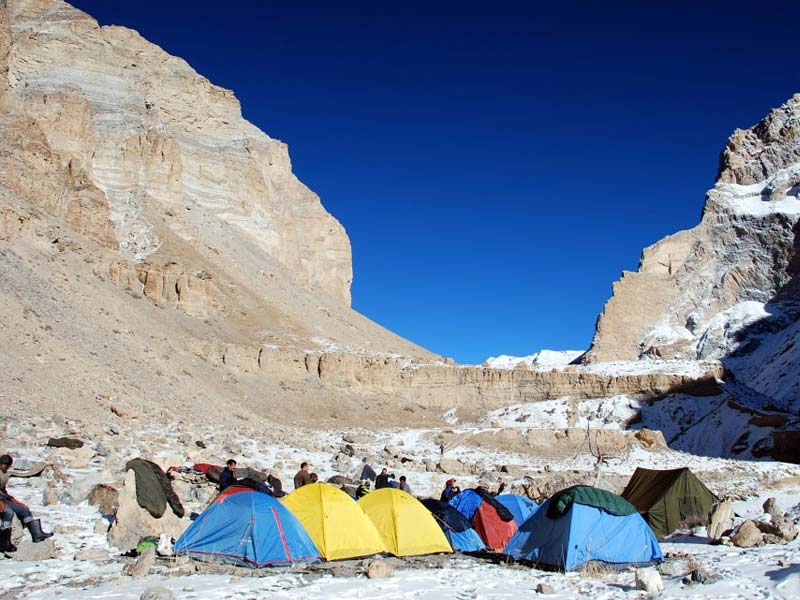
Tilat Sumdo to Shingra Koma trek. 6 hours, 9.5 km
Prepare to depart the campsite by 9 a.m., when the sun rises at 7 a.m. Even though the sun is shining, Tilat Sumdo, like most of the Chadar, only receives direct sunlight during the middle of the day. Another reason the Chadar forms and persists. Walking on the Chadar in the morning might seem like walking through a deep freezer. Your face should be the only exposed flesh, but that should be enough to induce a deep freeze. Listen to the sounds the Chadar produces as you stroll along with it. The sounds alter depending on the thickness of the Chadar. Soon enough, you’ll be able to tell where the Chadar is thick and where it is thin and dangerous.
Find a sunny spot about halfway through the journey, about noon, where your cook can provide a short hot meal of Maggie and tea. On the Chadar Trek, packed lunches are not allowed because the food will be too cold to eat by noon. The only way out is to eat hot, quick meals on the go. Pugmarks are common on the Chadar, so don’t be shocked if you see them. Although they are elusive to human eyes, the huge cats travel around freely. As you continue upstream, you’ll see Shingra Koma, a large camping area on your right. It’s located next to a massive stone wall straight out of a Hollywood film.
Also Read, Some of the toughest and Wildest treks on the planet
Trek from Shingra Koma to Nerak
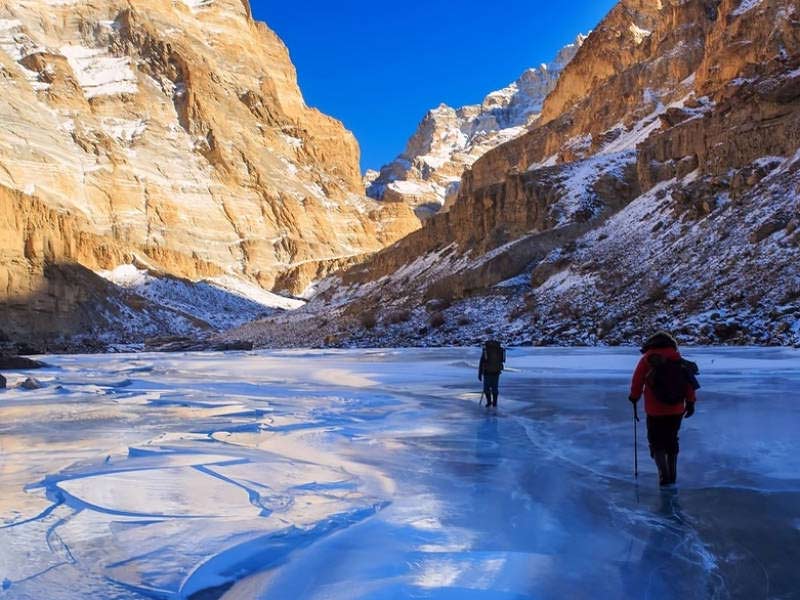
It’s a long journey from Shingra Koma to Nerak. It’s also one of the trek’s most stunning days. Keep an eye out for the little waterfalls on the left that have frozen into icefalls. Amid front of the waterfall, prayer flags float in the trees. The Ladakhis revere the location, as you are aware. The waterfall, surprisingly, is not frozen. Under the water, notice the greenish moss sprouting on the rocks. The day’s lunch stop is exactly halfway along the trail, beneath a rocky overhang. After lunch, the Zanskar river flows through narrow gorges that can only be crossed by four holding hands. The river is non-existent since the small gorge receives very little sunlight.
In most cases, a thick chadar forms here from end to end. After another two hours of walking through Chadar’s many colors and forms, you’ll arrive at Tibb, a huge camping place on your right. To the left, some caverns can comfortably accommodate 8 to 9 people. There is also more dry vegetation around the Tibb campground.
The distance between Tibb and Nerak is 12 kilometers. This is the day you finally get to see the long-awaited frozen waterfall. The day is also spectacular as we go through Chadar’s cliffs, gorges, and valleys. The first sight of Nerak is about 5 hours into the hike, following the lunch break. The presence of prayer flags surrounding Juniper plants near the Chadar indicates that you are approaching Nerak and the waterfall.

The famous Nerak waterfall is a kilometer ahead, around a curve in the gorge’s gloom. Just before the waterfall is the Nerak pul or bridge. Although the bridge is an ancient wooden bridge, it can still accommodate a queue of up to 4-5 persons at a time. The trail follows the Chadar for 20 minutes until you reach Nerak, where a tiny trail leads to the Nerak campground. Nerak is a settlement that is around 2,000 feet above the riverbed. The Chadar trekkers set their camp 200 feet above the river rather than going into the village. During the summer months, alone shelter at Nerak campground acts as a Rafting point. It is used as a shelter for Chadar trekkers throughout the winter.
Trekking and Gear Info
Trekking equipment should be brought from home because there are few locations to buy supplies in Leh during the winter. Instant noodles, for example, are a great addition because they can be kept and prepared fast. It is important to have enough before starting because it is best to be active for the better portion of the day to stay warm and keep the journey moving. In such conditions, ice picks, trekking boots, and several layers of extra warm clothing are a must. Tents are encouraged but not required because, like those who cross the river, one may easily camp in caves.
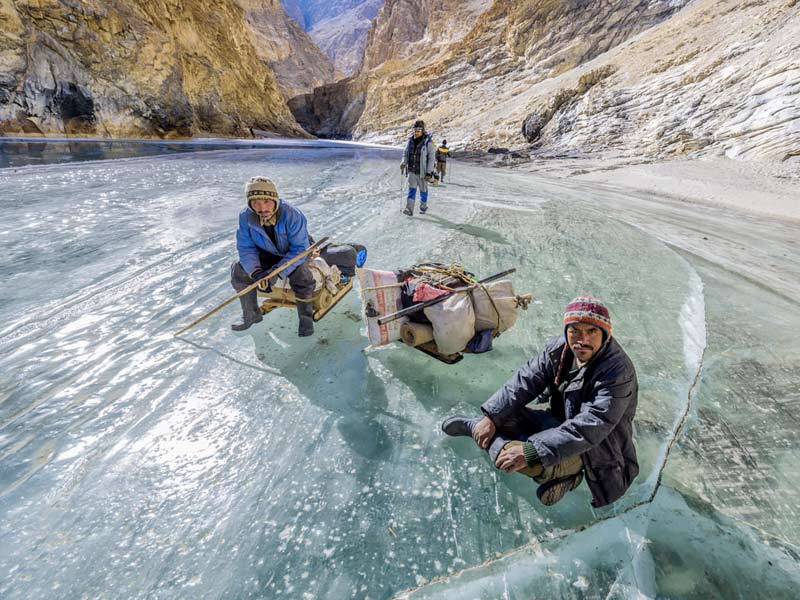
The Chadar’s dynamism can change the sight and feel of the entire area. The texture of the Chadar varies. Old Chadar breaks, new ones form where none previously existed, and so on. The Chadar will sometimes shatter right under your feet and float away like a raft. You have no choice except to sprint ahead to the safer sheet. You may see the same shattered raft getting stranded somewhere downstream, with more icicles clinging to it and forming a new Chadar. The Chadar journey is a once-in-a-lifetime opportunity. Your experience and the sights you witness will be unlike anybody else’s.





















